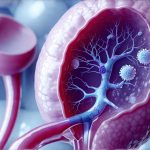Urinalysis, often considered a routine part of a general health check-up, is far more than just a screening tool for urinary tract infections. It’s a powerful diagnostic aid, particularly when investigating autoimmune diseases. These complex conditions arise from the body mistakenly attacking its own tissues and organs, leading to chronic inflammation and diverse symptoms. The kidneys, being central filtration units and highly vascularized organs, are frequently affected in autoimmune disease, making urinalysis an invaluable first step – or ongoing monitoring tool – in diagnosis and management. Subtle changes detectable through a simple urine test can often provide crucial clues about systemic disease processes that might otherwise remain hidden for extended periods.
The value of urinalysis in autoimmune disease assessment isn’t necessarily about finding obvious abnormalities like blood in the urine (hematuria) every time, although this can occur. Instead, it’s frequently about detecting less dramatic indicators – protein levels, cellular casts, or even subtle changes in appearance – that point to kidney involvement. These findings can prompt further, more specific investigations and ultimately lead to a correct diagnosis and tailored treatment plan. Understanding what urinalysis reveals, and how these results relate to different autoimmune conditions, is key for both healthcare professionals and patients seeking answers about their health.
The Role of Proteinuria in Autoimmune Kidney Disease
Proteinuria, the presence of abnormal amounts of protein in the urine, is a hallmark sign of kidney damage and frequently encountered in many autoimmune diseases affecting the kidneys. Conditions like Lupus Nephritis (kidney involvement in Systemic Lupus Erythematosus), Membranous Nephropathy (often associated with autoimmune processes), and even Vasculitis can all manifest as proteinuria detectable through urinalysis. The degree of proteinuria often correlates with the severity of kidney disease, though it’s important to remember that transient proteinuria can occur due to other factors like dehydration or strenuous exercise. Therefore, repeated testing is usually necessary to establish a definitive diagnosis.
The mechanisms behind proteinuria in autoimmune diseases are varied. Inflammation caused by the immune system can directly damage the glomeruli – the tiny filtering units within the kidneys. This damage allows larger proteins, normally retained by healthy glomeruli, to leak into the urine. Alternatively, some autoimmune antibodies may specifically target glomerular structures, causing inflammation and impairing their function. Measuring proteinuria isn’t just about detecting its presence; quantifying it (e.g., through a 24-hour urine collection or protein/creatinine ratio) provides valuable information for disease monitoring and assessing treatment response.
Importantly, the type of protein detected can also provide diagnostic clues. While albumin is the most common protein found in urine during glomerular damage, other proteins might indicate different types of kidney involvement. For example, Bence Jones proteins (light chains of immunoglobulins) are often seen in multiple myeloma and related autoimmune conditions affecting the kidneys. Accurate interpretation requires a thorough understanding of these nuances and integration with other clinical findings.
Cellular Casts: Indicators of Kidney Inflammation
Cellular casts, microscopic cylindrical structures formed within kidney tubules, provide valuable information about the location and type of inflammation occurring within the kidneys. These casts are created from solidified protein matrix combined with cells or cellular debris. Different types of casts point to different underlying conditions. In autoimmune diseases, specific cast types can be highly suggestive of particular diagnoses.
- Red blood cell (RBC) casts: Often indicate glomerular inflammation and damage, frequently seen in Lupus Nephritis or Vasculitis affecting the kidneys. Their presence signals active kidney disease requiring prompt attention.
- White blood cell (WBC) casts: Suggest tubulointerstitial nephritis – inflammation of the kidney tubules and surrounding tissues. This can be triggered by autoimmune processes directly or as a side effect of certain medications used to treat autoimmune diseases.
- Renal tubular epithelial cell casts: Indicate damage specifically to the renal tubules, potentially caused by autoimmune mediated attacks on these structures.
Detecting cellular casts requires careful microscopic examination of urine sediment by a trained laboratory professional. The number and type of casts present help clinicians differentiate between various causes of kidney disease and guide further diagnostic testing. It’s worth noting that casts can be transient; their presence in one sample doesn’t necessarily confirm chronic kidney disease, necessitating repeated analysis.
Urine Microscopy: Beyond Protein and Casts
Urinalysis isn’t limited to assessing protein levels and cellular casts. Urine microscopy – the examination of urine sediment under a microscope – reveals a wealth of information about the urinary tract and overall health. In autoimmune diseases, specific microscopic findings can point towards kidney involvement or related complications. For example, the presence of dysmorphic red blood cells (abnormally shaped RBCs) strongly suggests glomerular bleeding, characteristic of autoimmune glomerulonephritis.
Furthermore, detecting crystals in urine doesn’t always indicate a problem; they can form naturally based on hydration levels and diet. However, certain crystal types might be associated with specific autoimmune conditions or their treatments. Similarly, the presence of oval fat bodies – globules of fat within kidney cells – often indicates significant protein loss from glomerular damage, confirming proteinuria and suggesting severe kidney involvement.
The identification of immune complexes in urine can also be a crucial diagnostic indicator for some autoimmune diseases like Lupus Nephritis. These complexes are formed when antibodies bind to antigens, creating structures that deposit in the kidneys, triggering inflammation. Specialized tests beyond routine urinalysis are needed to identify these complexes, but their presence confirms an ongoing immune process contributing to kidney damage.
Limitations and Future Directions
While invaluable, urinalysis has limitations. False positives and false negatives can occur due to factors unrelated to autoimmune disease, emphasizing the need for careful interpretation in conjunction with other clinical data. Furthermore, early stages of some autoimmune kidney diseases might not show significant abnormalities on routine urinalysis, requiring more sensitive tests like biopsies for definitive diagnosis.
Looking forward, advancements in technology are enhancing the utility of urinalysis in autoimmune disease assessment. Novel biomarkers detectable in urine, reflecting specific immune processes or kidney damage mechanisms, are being investigated. These biomarkers promise earlier and more accurate diagnoses, as well as improved monitoring of treatment effectiveness. “Point-of-care” testing devices offering rapid on-site results are also evolving, potentially revolutionizing how we screen for and manage autoimmune diseases in both clinical and remote settings. The future of urinalysis is bright, promising to further refine our understanding and management of these complex conditions.





















